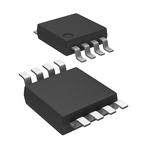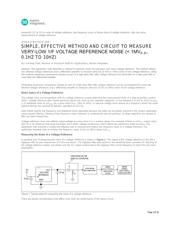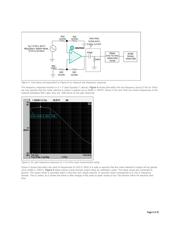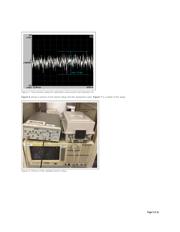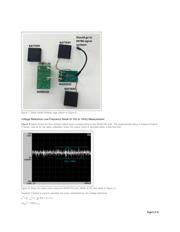herunterladen

Keywords:
0.1 to 10 Hz noise of voltage reference, low frequency noise or flicker noise of voltage reference, ultra low noise
measurement of voltage reference
APPLICATION NOTE 6206
SIMPLE, EFFECTIVE METHOD AND CIRCUIT TO MEASURE
VERY-LOW 1/F VOLTAGE REFERENCE NOISE (< 1ΜV
,
0.1HZ TO 10HZ)
By:
Srudeep Patil, Member of Technical Staff for Applications, Maxim Integrated
Abstract: This application note describes a method to measure noise of a precision, low noise voltage reference. This method utilizes
two identical voltage references and a differential amplifier to measure ultra-low (0.1Hz to 10Hz) noise of one voltage reference. Using
this method, expensive components needed as part of a high-pass filter after voltage reference are eliminated as a high-pass filter is
used after the differential amplifier.
Eliminating expensive components needed as part of a high-pass filter after voltage reference can be accomplished by using two
identical voltage references and a differential amplifier to measure ultra-low (0.1Hz to 10Hz) noise of one voltage reference.
Noise Specs of a Voltage Reference
The voltage noise and temperature drift of a voltage reference usually determine the measurement limits of a data acquisition system
(DAS). Voltage reference data sheets generally specify the noise by two separate categories: 1) low-frequency (0.1Hz to 10Hz) as µV
; 2) wideband noise as µV for a given band (e.g., 10Hz to 1kHz), or spectral-voltage noise density at a frequency where the noise
spectral density has reached its flatness, specified as nV/√Hz .
Data sheets specify low-frequency and wideband noise separately because the latter can be greatly reduced in the system application
using lowpass filtering. Filtering of low-frequency noise, however, is cumbersome and not practical, as large capacitors are needed to
filter out lower frequencies.
Voltage-reference noise also affects output-voltage accuracy since it is a random signal. For example, if there is 1mV
output noise,
then for a 3V reference that noise translates into 0.033% voltage randomness which affects the reference's initial accuracy. This
application note presents a simple and effective way to measure and reduce low-frequency noise in a voltage reference. The
application example aims to achieve low-frequency noise (0.1Hz to 10Hz) below 1µV
.
Measuring the Noise of a Voltage Reference
A standard way of measuring the noise of a voltage reference is shown in
Figure 1. The output of the voltage reference is fed into a
highpass filter to pass frequencies of 0.1Hz and above. The highpass filter also performs two beneficial tasks: provides DC-blocking of
the voltage reference output, and allows only the AC-signal content above the highpass filter corner frequency to reach the low-noise
preamplifier.
Figure 1. Typical setup for measuring the noise of a voltage reference.
There are design
considerations that affect, even limit, the performance of the above circuit:
P-P
P-
P
RMS
P-P
P-P
Page 1 of 12

